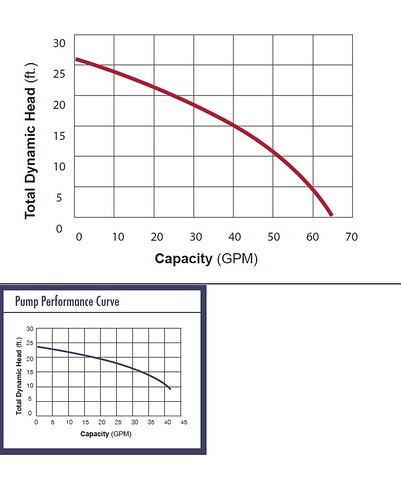Ok, so I have a high water table and over the weekend, ground water was somehow gushing up my sump pit and flowing into the house.
PB said I should NEVER have that issue, but heck I did.
NOW I am trying to get the correctly sized sump pump and I know enough to be dangerous. PB wants to load in a giant 1HP 8,000 GPH monster...I think that is overkill and 1 1/2 inch PVC can't handle that much at lower pressures anyways.
In reading the 101 document I see the GPM at 38 or 51 (assume that is relative to pressure) - anyways if I use max of 51 x 60 min = 3060 GPH MAX ? Is my math sound ? I realize if so that does not even take into consideration head loss.
I read some other tables that say at average pressure the max flow in 1 1/2 is closer to 6,000 GPH (without head loss of course). If it matters I have about 8' lift, then 1 90 degree and another 8 ft run to the sewer drain.
Am I on the right track or totally screwed up. Please let me know what else you need to help.
Can someone help out ?
Thanks,
PB said I should NEVER have that issue, but heck I did.
NOW I am trying to get the correctly sized sump pump and I know enough to be dangerous. PB wants to load in a giant 1HP 8,000 GPH monster...I think that is overkill and 1 1/2 inch PVC can't handle that much at lower pressures anyways.
In reading the 101 document I see the GPM at 38 or 51 (assume that is relative to pressure) - anyways if I use max of 51 x 60 min = 3060 GPH MAX ? Is my math sound ? I realize if so that does not even take into consideration head loss.
I read some other tables that say at average pressure the max flow in 1 1/2 is closer to 6,000 GPH (without head loss of course). If it matters I have about 8' lift, then 1 90 degree and another 8 ft run to the sewer drain.
Am I on the right track or totally screwed up. Please let me know what else you need to help.
Can someone help out ?
Thanks,


